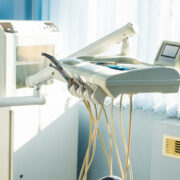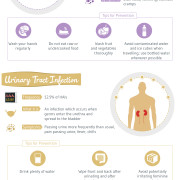4 Ways to Improve Patient Safety

According to a recent study, an estimated 98,000 people die each year from preventable medical errors. This means medical errors claim more lives than car accidents, breast cancer, or AIDS. Patient safety is something that should be at the forefront of every healthcare professional’s mind, as the wellbeing and well-being of patients are always at risk when it comes to medical procedures and treatments. The last thing you want is for an error or mistake to put your patients in danger, resulting in physical or psychological harm.

Allow Patient Access to EHR Data
One way to avoid medical record misinformation is to give patients direct access to their own electronic health records (EHRs). This way, they can see for themselves what treatments have been prescribed and what tests have been ordered. Not only does this help patients feel more empowered and in control of their own health, but it also helps them catch any errors that may have been made in their records.
Care for Hospital Environment
Maintaining a hospital environment is crucial for promoting patient safety. Hospitals are busy, bustling places where there is literally no room for error. Every medical team needs to be working together seamlessly in order to ensure that patients receive the best care possible, and maintaining a clean, organized environment helps to facilitate this seamless collaboration. From eliminating clutter on the floors to keeping equipment in proper working order, ensuring a clean and organized hospital environment is a constant task that requires diligence, attention to detail, and an unwavering focus on patient safety.
Robust Patient Identification Technology
While patient safety is a top priority in any healthcare setting, poor patient identification remains a major barrier to delivering safe, high-quality care. This is especially true in emergency settings, where there are often multiple patients coming through the doors at once and staff members are under great pressure to quickly triage, diagnose, and treat patients as efficiently as possible. Thanks to robust patient identification technology, these challenges can now be overcome. That means using systems that can accurately identify patients by their unique characteristics, such as fingerprints or iris scans. This way, you can be sure that the right patient is getting the right treatment, and not vice versa.
With solutions like RightPatient, nurses, doctors, and other medical personnel can easily retrieve accurate EHRs using patient photos – the platform runs a biometric search to provide the EHR saved with the same patient photo. This information can then be cross-referenced with data from previous encounters with that particular patient or with past tests or procedures performed for that person. As a result, critical errors such as misdiagnosis or overprescription of medications and treatments can be avoided.
Encourage Healthcare Professionals to Continue Education
One of the best ways to improve patient safety is to encourage healthcare professionals to continue their education on an ongoing basis. The healthcare landscape is always changing, new treatments are being developed, new technologies are being introduced, and new regulations are being put into place. Enrolling in different programs like ABSN programs can help nurses stay up-to-date with their careers.
Encouraging healthcare professionals to take distance learning courses or pursue specialized certifications online like distance accelerated BSN online can help to keep their skills current while also providing them with much-needed support and renewed energy. Not only does education improve patient safety by helping healthcare workers stay up-to-date on new treatments and best practices, but it also helps to boost morale and reduce burnout in an otherwise incredibly stressful profession.
The goal of any healthcare professional should be to prioritize patient safety. By focusing on this simple but important goal, healthcare professionals can avoid medical errors and ensure that everyone receives the treatment they need. This includes making sure that facilities have appropriate safety measures in place, schedules are flexible enough to allow medical professionals to respond quickly in an emergency, and approach each new patient with sensitivity and compassion.









Leave a Reply
Want to join the discussion?Feel free to contribute!